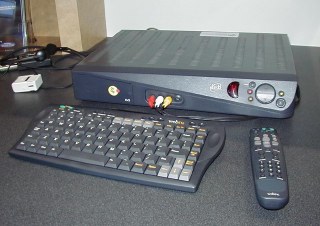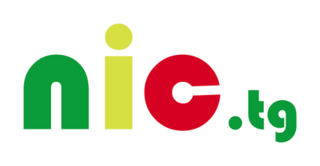 W
WAsk.com is a question answering–focused e-business founded in 1996 by Garrett Gruener and David Warthen in Berkeley, California.
 W
W.cf is the Internet country code top-level domain (ccTLD) for the Central African Republic. It is administered by the Central African Society of Telecommunications.
 W
WCascading Style Sheets (CSS) is a style sheet language used for describing the presentation of a document written in a markup language such as HTML. CSS is a cornerstone technology of the World Wide Web, alongside HTML and JavaScript.
 W
WFreeType is a popular software development library used to render text onto bitmaps, and provides support for other font-related operations. The FreeType font rasterization engine is free and open-source software with the source code dual-licensed under a BSD-like license and the GPL. FreeType supports a number of font formats, including TrueType, Type 1, and OpenType and "is designed to be small, efficient, highly customizable, and portable while capable of producing high-quality output ."
 W
WThe Handheld Device Markup Language (HDML) is a markup language intended for display on handheld computers, information appliances, smartphones, etc.. It is similar to HTML, but for wireless and handheld devices with small displays, like PDA, mobile phones and so on.
 W
WThe RAD6000 radiation-hardened single board computer, based on the IBM RISC Single Chip CPU, was manufactured by IBM Federal Systems. IBM Federal Systems was sold to Loral, and by way of acquisition, ended up with Lockheed Martin and is currently a part of BAE Systems Electronic Systems. RAD6000 is mainly known as the onboard computer of numerous NASA spacecraft.
 W
WInternet Explorer for Mac OS X is a discontinued proprietary web browser developed by Microsoft for the Macintosh platform to browse web pages. Initial versions were developed from the same code base as Internet Explorer for Windows. Later versions diverged, particularly with the release of version 5 which included the cutting edge, fault-tolerant and highly standards-compliant Tasman layout engine.
 W
WInternet Protocol version 6 (IPv6) is the most recent version of the Internet Protocol (IP), the communications protocol that provides an identification and location system for computers on networks and routes traffic across the Internet. IPv6 was developed by the Internet Engineering Task Force (IETF) to deal with the long-anticipated problem of IPv4 address exhaustion. IPv6 is intended to replace IPv4. In December 1998, IPv6 became a Draft Standard for the IETF, who subsequently ratified it as an Internet Standard on 14 July 2017.
 W
WThe Motorola StarTAC, first released on 3 January 1996, is the first ever clamshell (flip) mobile phone. The StarTAC is the successor of the MicroTAC, a semi-clamshell design first launched in 1989. Whereas the MicroTAC's flip folded down from below the keypad, the StarTAC folded up from above the display. In 2005, PC World named the StarTAC as the 6th Greatest Gadget of the Past 50 Years. The StarTAC was among the first mobile phones to gain widespread consumer adoption; approximately 60 million StarTACs were sold.
 W
WMSN TV was a web access product consisting of a thin client device which used a television for display, and the online service that supported it. The device design and service was developed by WebTV Networks, Inc., a company started in 1995. The WebTV product was announced in July 1996; in April 1997, the company was purchased by Microsoft Corporation and absorbed into MSN.
 W
WThe Nintendo 64 (officially abbreviated as N64, hardware model number pre-term: NUS, stylized as NINTENDO64) is a home video game console developed and marketed by Nintendo. Named for its 64-bit central processing unit, it was released in June 1996 in Japan, September 1996 in North America, and March 1997 in Europe and Australia. It was the last major home console to use the ROM cartridge as its primary storage format until the Switch in 2017. The Nintendo 64 was discontinued in 2002 following the launch of its successor, the GameCube.
 W
WThe history of the Opera web browser began in 1994 when it was started as a research project at Telenor, the largest Norwegian telecommunications company. In 1995, the project branched out into a separate company named Opera Software ASA, with the first publicly available version released in 1996. Opera has undergone extensive changes and improvements, and introduced notable features such as Speed Dial.
 W
WPalm OS is a discontinued mobile operating system initially developed by Palm, Inc., for personal digital assistants (PDAs) in 1996. Palm OS was designed for ease of use with a touchscreen-based graphical user interface. It is provided with a suite of basic applications for personal information management. Later versions of the OS have been extended to support smartphones. Several other licensees have manufactured devices powered by Palm OS.
 W
WPortable Network Graphics is a raster-graphics file format that supports lossless data compression. PNG was developed as an improved, non-patented replacement for Graphics Interchange Format (GIF).
 W
WThe Power Macintosh 4400 is a personal computer designed, manufactured and sold by Apple Computer, Inc. from November 1996 to February 1998. It differs from prior desktop Macintosh models in that it was built with industry-standard components such as an IDE hard drive and an ATX-like power supply.
 W
WThe Power Macintosh 5260 is a personal computer designed, manufactured and sold by Apple Computer, Inc. from April 1996 to March 1997. It is a replacement for the Power Macintosh 5200 LC, retaining its all-in-one form factor while replacing its PowerPC 603 CPU with the newer and faster PowerPC 603e, and dropping the "LC" brand. As was standard practice at the time for Apple, the 5260 was re-branded as a number of Performa models and sold to consumer markets, while the 5260 itself was primarily sold to the North American education market as a Power Macintosh.
 W
WThe Power Macintosh 6400 is a personal computer designed, manufactured and sold by Apple Computer from August 1996 to August 1997. It is the only Macintosh mini-tower system to be branded as a Performa, and alongside the Performa 6360 was the last new Performa-branded model introduced by Apple.
 W
WThe Power Macintosh 7600 is a personal computer designed, manufactured and sold by Apple Computer, Inc. from April 1996 to November 1997. It is identical to the Power Macintosh 7500, but with a PowerPC 604 CPU. Three models were available with 120 MHz, 132 MHz and 200 MHz processors. Like the 7500, it includes advanced Audio-Video ports including RCA audio in and out, S-Video in, composite video in and standard Apple video ports. The 7600 features the easy-access "outrigger" desktop case first introduced with the Power Macintosh 7500. It was eventually replaced by the Power Macintosh 7300, one of the very few times that Apple updated a computer but gave it a lower model number - the reason is that the 7300 was a joint replacement for the 7600 and the Power Macintosh 7200.
 W
WThe PowerBook 1400 is a notebook computer that was designed and sold by Apple Computer, Inc. from 1996 to 1998 as part of their PowerBook series of Macintosh computers. Introduced in October 1996 at a starting price of $2499, it was the first new PowerBook after the controversial PowerBook 5300. After the introduction of the more powerful PowerBook 3400 in February 1997, the 1400 took on the role of Apple's entry level notebook and remained there until its discontinuation in May 1998. Its successor, the PowerBook G3 Series would ultimately go on to replace and consolidate not only the 1400, but the 2400 and 3400 as well.
 W
WSun Enterprise is a range of UNIX server computers produced by Sun Microsystems from 1996 to 2001. The line was launched as the Sun Ultra Enterprise series; the Ultra prefix was dropped around 1998. These systems are based on the 64-bit UltraSPARC microprocessor architecture and related to the contemporary Ultra series of computer workstations. Like the Ultra series, they run Solaris. Various models, from single-processor entry-level servers to large high-end multiprocessor servers were produced. The Enterprise brand was phased out in favor of the Sun Fire model line from 2001 onwards.
 W
W.tg is the Internet country code top-level domain (ccTLD) for Togo. Although there are no restrictions on who can register domains in this TLD, it is not much used outside Togo.
 W
WThe Libretto was a line of subnotebook computers designed and produced by Toshiba. The line was distinguished by its combination of functionality and small size, squeezing a full Windows PC into a device the size of a paperback book. The first Libretto model, the Libretto 20, was released on April 17, 1996, with a volume of 821 cm3 (50.1 cu in) and weighing just 840 g (30 oz), making it by far, the world's smallest commercially available Windows PC at the time, and a trend the Libretto Range continued for many years. The original Libretto line was discontinued in Europe and the U.S. in 1999, but the production continued in Japan with the SS, FF and then the L series until 2002. The first L series Libretto was released on 18 May 2001 and the last just 11 Months later on 24 April 2002. Production of all Librettos ceased from 2002 until the release of the Libretto U100 in 2005.
 W
WToughbook is a trademarked brand name owned by Panasonic Corporation that refers to its line of rugged computers. The Toughbook, introduced in 1996 with the CF-25, is, like most other rugged laptops, designed to withstand outside forces which would normally damage or destroy normal laptops. Toughbook mobile computers are used in a wide variety of industries, including construction, defense, emergency services, government, healthcare, law enforcement, manufacturing, oil, gas, telecom, and utilities.
 W
WThe domain name .tv is the Internet country code top-level domain (ccTLD) for Tuvalu.
 W
WUniversal Serial Bus (USB) is an industry standard that establishes specifications for cables and connectors and protocols for connection, communication and power supply (interfacing) between computers, peripherals and other computers. A broad variety of USB hardware exists, including eleven different connectors, of which USB-C is the most recent.